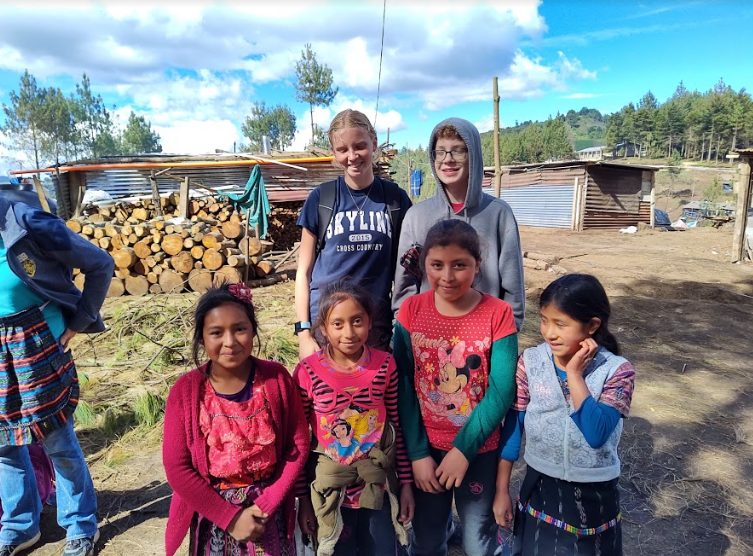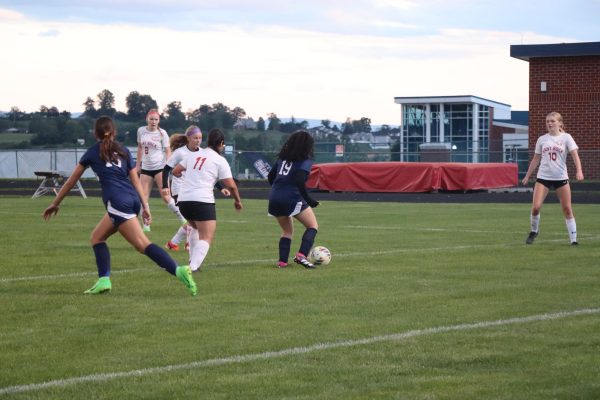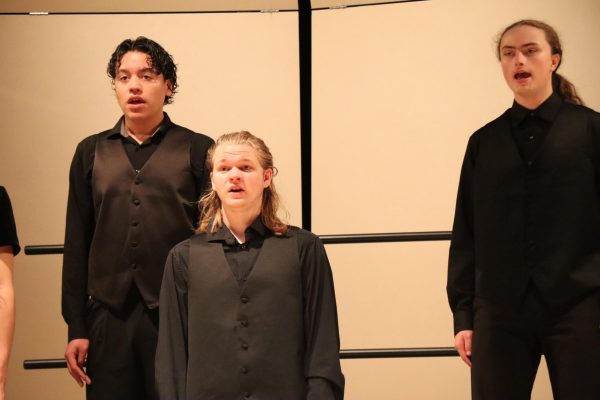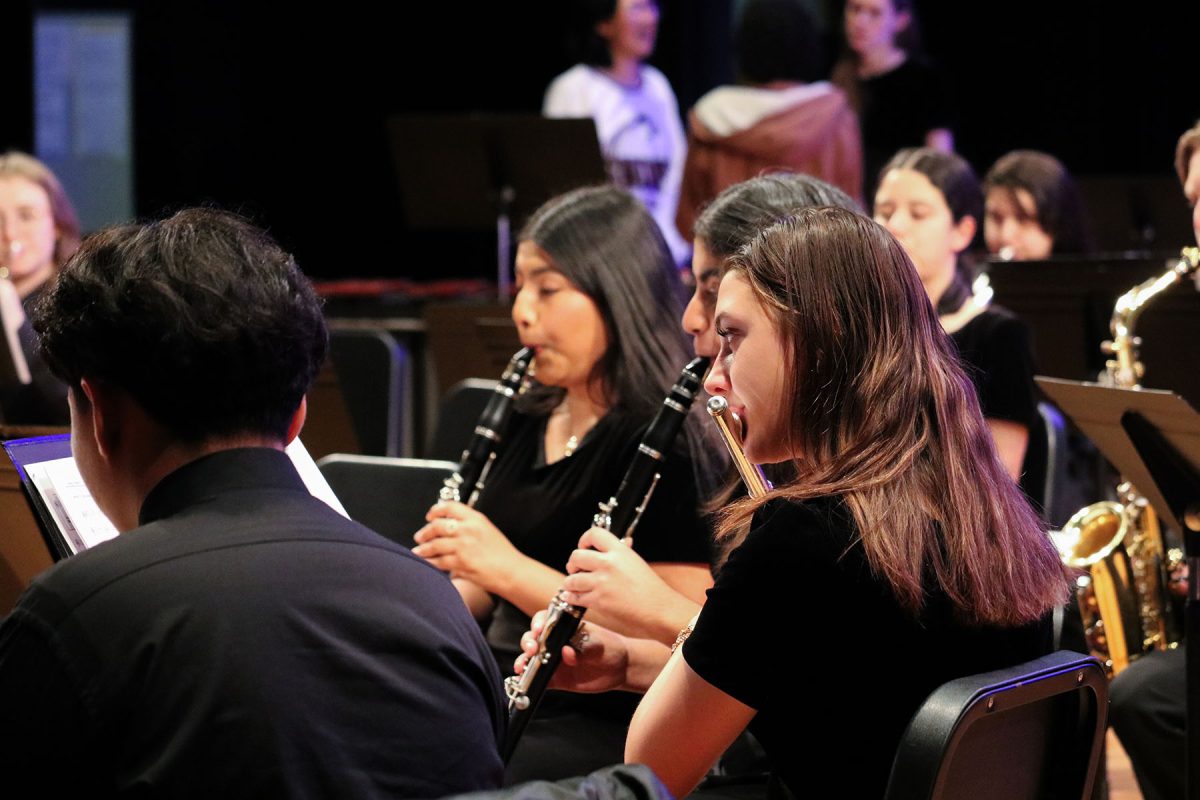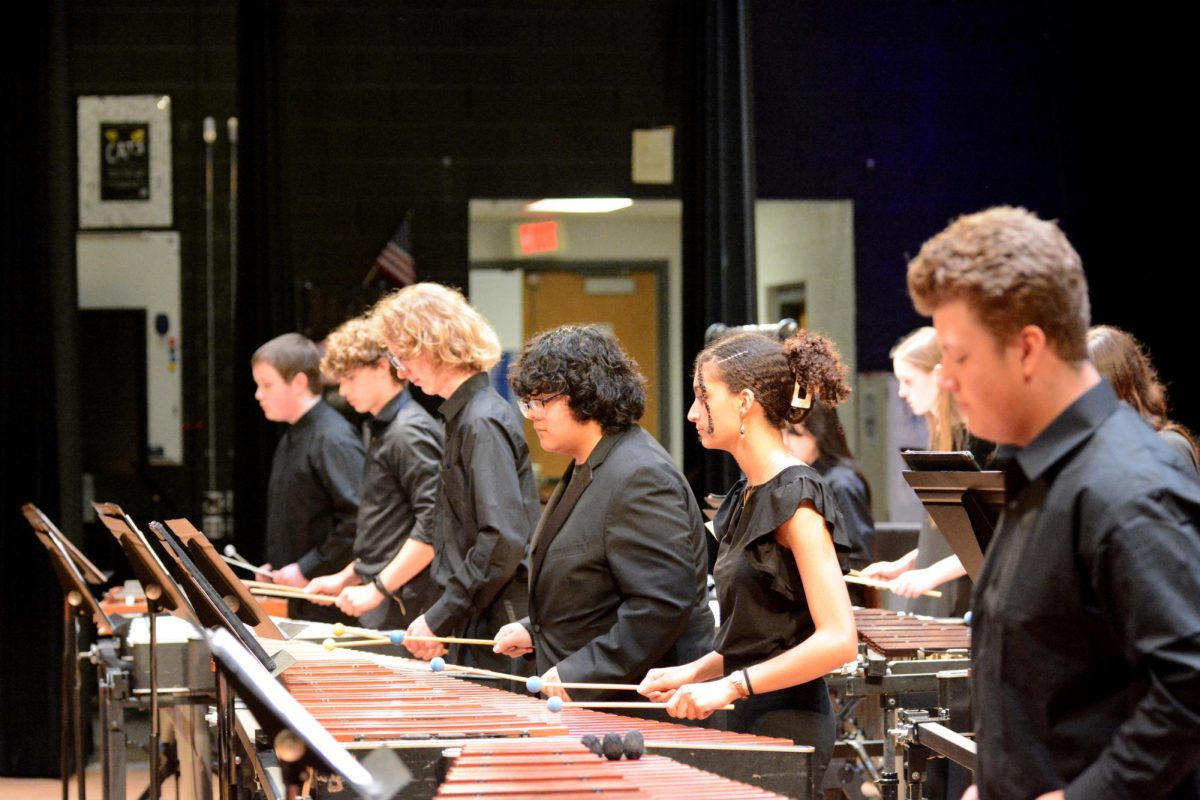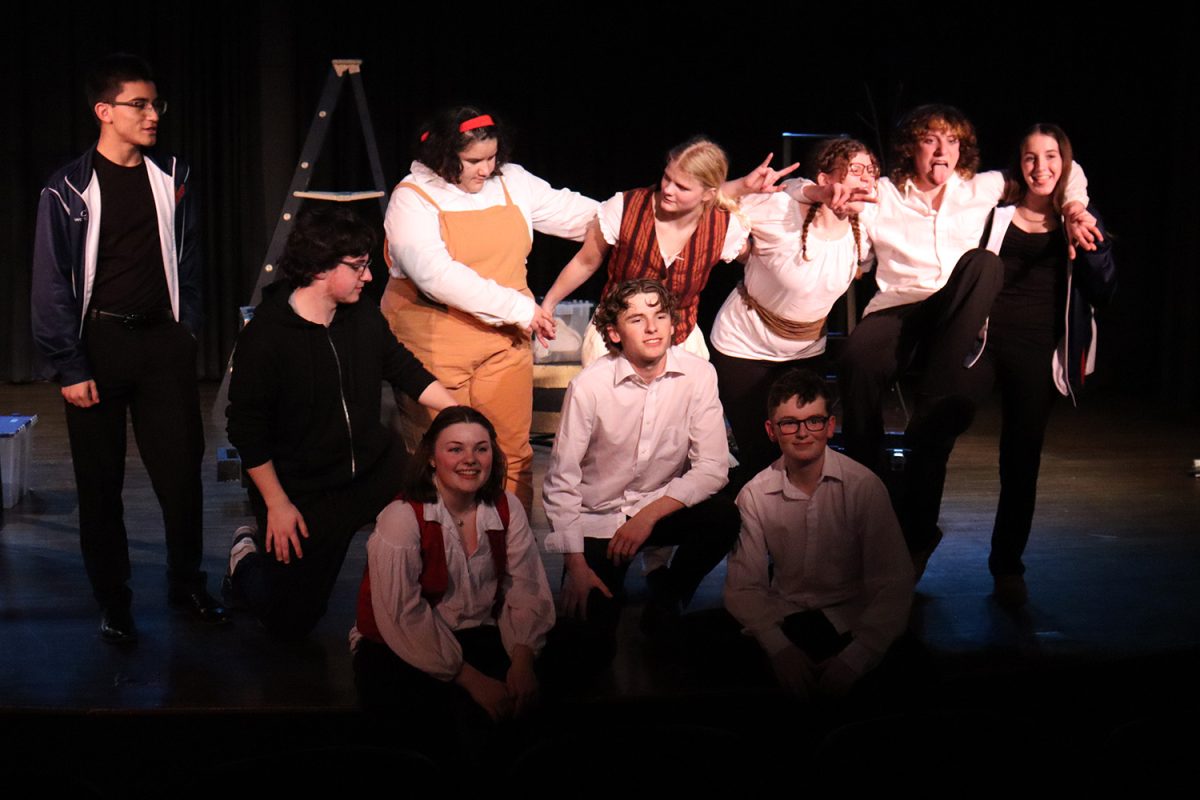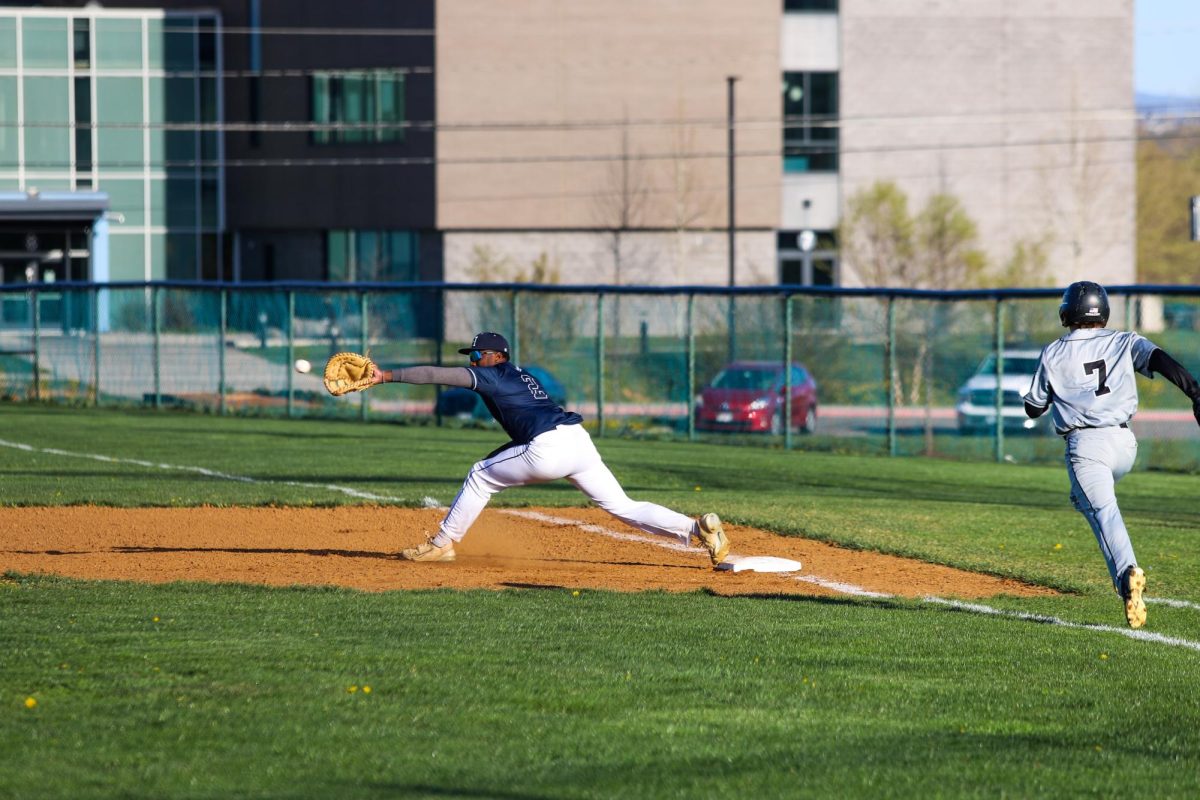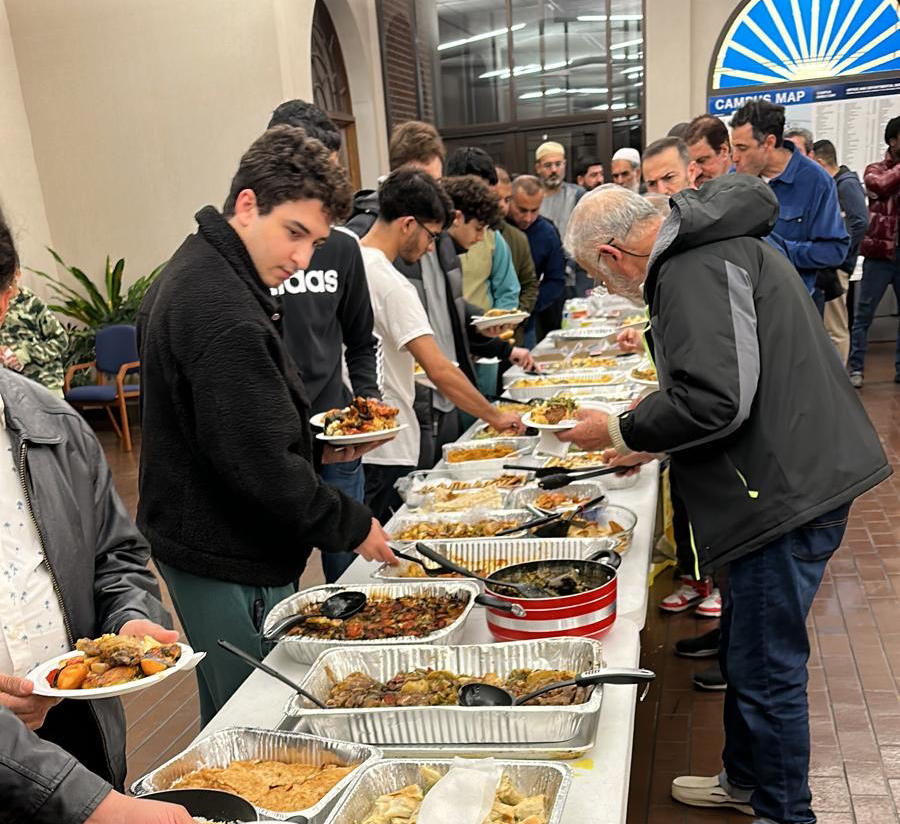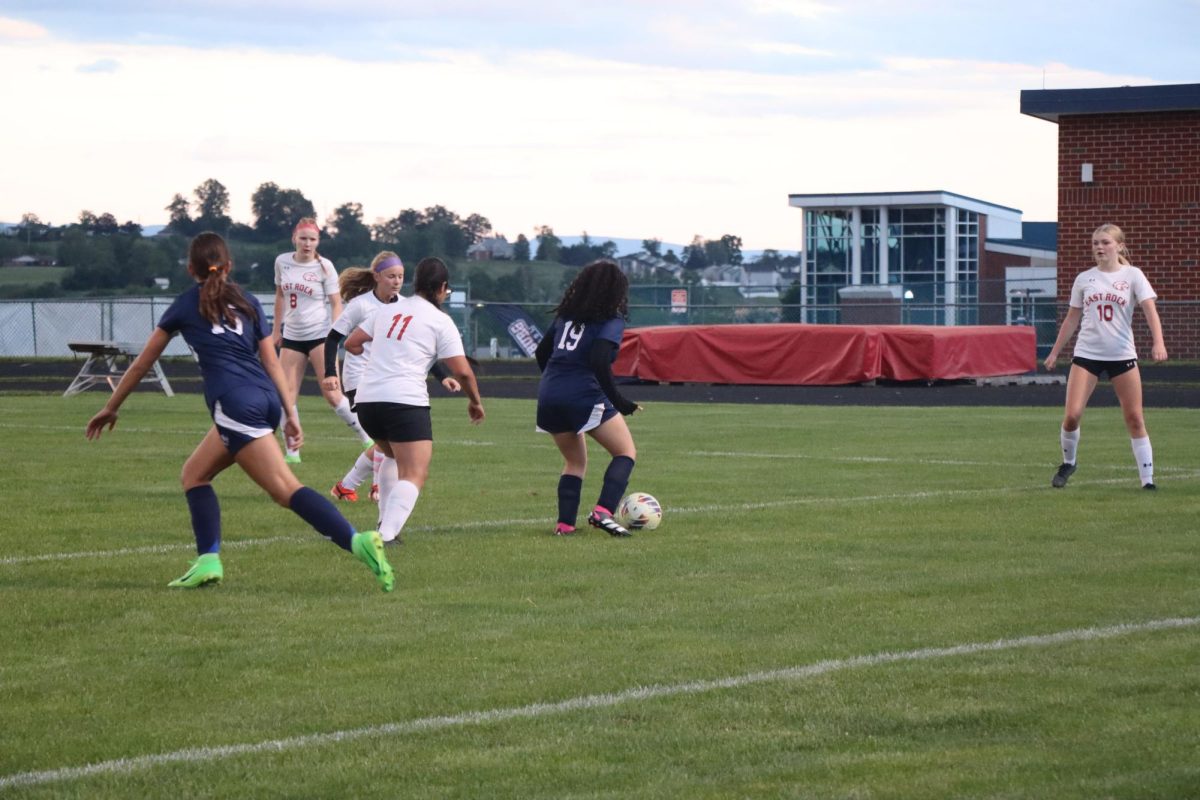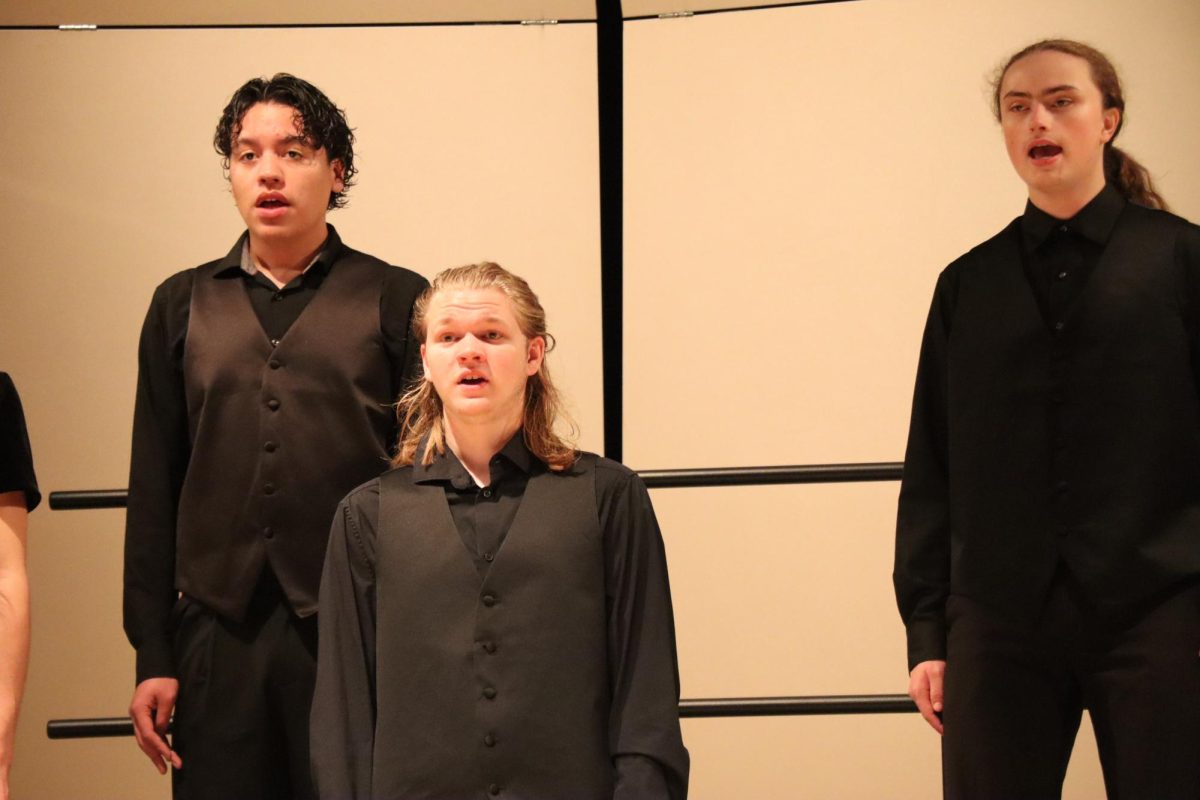Blagg takes mission trip to Guatemala, learns culture
Junior Lena Blagg and freshman Micah Blagg pose for a picture with children in the Guatemalan village they stayed in.
October 6, 2022
What do you know about Guatemala? That it’s located in Central America? That’s it’s colorful, full of green mountains with maize grown on the side? Maybe you know about the Mayan culture and have seen the pictures of old temples. What you may not know is that Guatemala has one of the highest poverty rates in the Americas, and that almost 50% of its people live below the poverty line, with the fourth highest rate of child malnutrition in the world. This was the reality junior Lena Blagg was faced with as she went on a week-long mission trip in the highlands of Guatemala.
Blagg traveled with a group of eight people, including her dad and younger brother. The group was organized by Highland Support Project (HSP), a nonprofit dedicated to supporting indigenous peoples, lands and culture.
“The first day we flew into Guatemala City and stayed there. We stayed the majority of the rest of the week in a community center, it’s a very small community I’m not even sure it has a name, but it’s kind of on the outskirts of Zela,” Blagg said. “The center was something the community had built and over the years groups from HSP have stayed in that center. It’s just a building, very dorm-like style rooms, nothing fancy. There’s running water, but there is no wifi, air conditioning or heating.”
While there, Blagg and the group were immersed in the Mayan culture, a branch of the Guatemalan people.
“The Mayans follow a Mayan calendar, each day has a sacred meaning. There are nawals, which is like a spirit, that describes and defines the different days of their calendar. Almost everything has meaning or symbolizes something in the Mayan culture including colors, numbers and animals. Jaguars, the color red, and maize or corn are some of the specific things that are important to the mayan culture,” Blagg said.
Beyond having specific traditions for everyday objects, the Mayans are also very connected to the Earth.
“The Guatemalan people are very connected to nature and agriculture. Almost all families, especially in the highlands, grow corn, beans and squash. They spend a lot of time tending the farms and nurturing their plants. Once crops are harvested they are used directly for food and sometimes as offerings to God,” Blagg said.
Much of Blagg’s time was spent in the highland areas, where crops are grown on the sides of mountains and villages are small and spread out. Her time there was quiet and calm, as opposed to the city bustling with people and noise.
“In the cities everything is very intense because there is so much going on around you. It’s very colorful with the buildings, shops and vendors. There are people everywhere. There are tourists and people from the city trying to sell you stuff. There is always a lot going on,” Blagg said. “There’s dogs everywhere in the streets [and] there are a lot of motorcycles. Full families will fit on a motorcycle and weave in and out of people and other cars. There are little taxis called Tuk Tuks so everybody is yelling and trying to get your attention.”
Blagg’s mission trip was filled mostly with serving those in the community, but she was also able to do a little tourism.
“We went shopping and went around the city in Zela. We went across a boat in Antigua, shopped, went to markets and we went to a coffee plantation learning how they grew coffee,” Blagg said. “We participated in a religious Mayan ceremony, which was a really cool and an immersive experience. People in the Mayan do [those ceremonies] a lot whether it’s for celebration or if something bad has happened and they need to pray. It was cool to be a part of that.”
For the mission portion of the trip Blagg and the group worked with local masons to build stoves out of cinder blocks.
“My tour guide was saying it’s not important that we came to build stoves, but it is important that somebody did. The people of Guatemala could have done it way better than us, but it’s something that we did so we realize that it’s hard work. What is really important is that we are giving money when we go down and do that so they have resources, but they allow us to build the stoves so we grasp what they have to do,” Blagg said. We weren’t [having the mindset] of they need us to come down here and build the stoves. That’s just part of what they do when they come down, so we get hands-on experience, instead of just sending money.”
The communities in the area where Blagg stayed are very poor. Blagg recalled seeing tents and woodshacks with aluminum scraps that people built as homes.
“This was a new community, the one we are working in, and they’ve been pushed out by the government. They had to leave their homes and pack what they could to move after living in a certain village for years. Having to leave like that [when] they don’t even have a say in it and how they have practically nothing, it’s really hard to see that,” Blagg said. “It makes me sad because we are very privileged where we live and how much I have at least. It made me sad to see how little they have, but also happy to see how grateful they are even after everything they’ve been through.”
When Blagg wasn’t building stoves or learning about the culture she was playing games like hide and seek with native kids in the village.
“I do know a little bit of Spanish, but they hardly speak Spanish [because] they speak the Mayan language or other native languages. It’s hard to understand, but in a sense just smiling and laughing, trying to figure out each other, it’s really fun to be with the kids,” Blagg said. “[Guatemala is at] a higher altitude, so we would get very out of breath while playing, [but] they’re full of energy and they laughed at us for getting tired. Playing with the kids was my favorite part because I love kids in general and just being with them.”
Another highlight of the trip for Blagg was the food. Her favorite Guatemalan cuisine was chocolate dipped cookies, called Chikys, which she ate everyday at lunch.
“The food was prepared for us each day by the women in the village. There were homemade tortillas at almost every meal. Breakfasts usually consisted of fruits, usually we would eat plantains. Lunch and dinner were usually similar, but they varied slightly. I had lots of corn, beans, rice and there was usually soup at each meal. Most everything we ate was grown in the community,” Blagg said.
Like much in the Mayan culture, every food cooked and grown has a purpose.
“One thing the Guatemalan people believe is that food will only taste good if the person preparing it puts hard work, love and even prayers into it. If they don’t, the food won’t taste good. This applies to many aspects of their lives, hard work and meaningful efforts will bring good results,” Blagg said.
Blagg had a number of memorable experiences, but one of the best ones was her stay at Antigua where about 37 volcanoes are located.
“One of my all time favorite memories of my trip happened the last day I was there. We were staying in a hotel in Antigua, the historic capital of Guatemala. After dinner we went up onto the roof of the hotel and watched the sunset. Once it got dark we were actually able to watch a volcano erupt,” Blagg said. “I’ve always heard about volcanoes and seen pictures, but to actually watch one erupt was an unreal experience.”
Donate and support the HSP efforts:



